As a professional heat resistant gloves factory for gloves manufacturing over 20 years, we would like to share our experience on how to choose the best welding gloves. First of all, let’s have a knowledge of the importance of welding gloves. Welding gloves are essential protective gear for anyone involved in welding tasks.
1. Importance of Welding Gloves
A good welding gloves should be able to protect our hands from extreme heat in case of any burns and injuries; Faced with flying sparks and molten metal, welders need durable heat-resistant gloves with long cuffs (27cm, 35cm, 40cm) for forearm protection; The welding work environments are full of harmful ultraviolet (UV) and infrared (IR) radiation, which require shields for skin from those harmful rays; Besides, quality welding gloves can protect hands from sharp objects and rough surfaces; And the flame retardant welding gloves are characteristic of a good grip for better control of the welding tools; The improved comfort could also push welders to work more efficiently.
Welding gloves are usually of long cuffs and made from heat-resistant materials like leather. Their reinforced seams for durability, padded lining on palm for comfort and design for dexterity all together contribute to less injuries in welding operations.
2. Types of Welding Gloves
Based on material types, there are cow split (grain) leather welding gloves and Kevlar welding gloves.
2.1 Cow (Split) Leather Welding Gloves
First, Let’s have a look at cow leather welding gloves. Leather gloves are naturally resistant to high temperatures, making it effective in protecting hands from heat and sparks generated during welding; The cow leather for gloves production is durable itself against wear and tear; Quality leather welding gloves provide a good balance of protection and dexterity, so that welders can handle tools and materials easily and effectively; Many leather gloves come with padded linings for added comfort, which is crucial for prolonged use during welding tasks; The leather itself helps prevent weld spatter from penetrating the glove, reducing the risk of burns; Reinforced seams and finger areas for welding gloves can enhance durability and protect against cuts or abrasions.
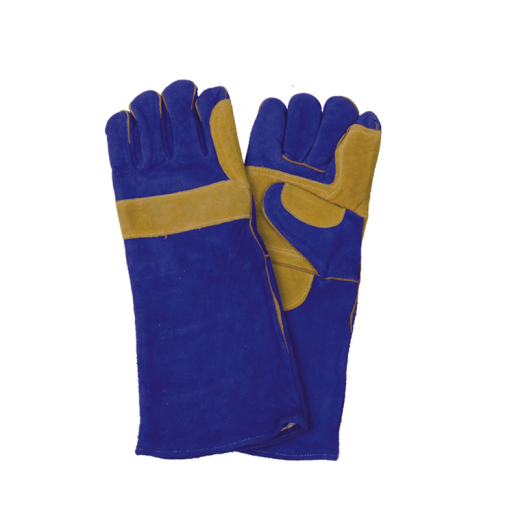
2.2 Kevlar Welding Gloves
Kevlar welding gloves can withstand high temperatures and is cut-and-abrasion resistant, making the Kevlar materials a perfect choice for handling sharp objects and welding operations at the same time. Kevlar gloves are lighter than traditional leather gloves. The increased comfort and dexterity during welding operations enable welders to perform precise tasks safely. Kevlar welding gloves are particularly useful for tasks that require both heat protection and cut resistance, such as MIG welding, fabrication, and metalworking.
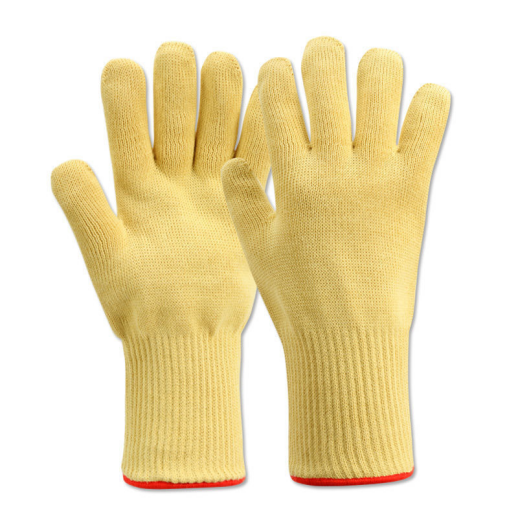
2.3 MIG welding gloves, TIG welding gloves & stick welding gloves
Based on welding techniques, we can divide the welding gloves into MIG welding gloves, TIG welding gloves, stick welding gloves. Here are two comparison tables for MIG, TIG, and stick welding gloves and MIG, TIG, and stick welding respectively.
| Feature | MIG Welding Gloves | TIG Welding Gloves | Stick Welding Gloves |
| Material | Often leather | Typically leather or Kevlar | Generally leather or heavy-duty materials |
| Heat Resistance | High | Very high | High |
| Dexterity | Moderate to high | Very high | Moderate |
| Grip | Good, often designed for control | Excellent, allows precise handling | Good, often reinforced for durability |
| Protection from Spatter | Moderate to high | High | High |
| Comfort | Moderate comfort, some padding | High comfort, flexible | Moderate comfort, may be bulkier |
| Typical Use | General welding, especially on thin metals | Precision welding on various metals | Versatile, used for structural and repair work |
Below is a comparison table for MIG, TIG, and stick welding:
| Feature | MIG Welding (Metal Inert Gas) | TIG Welding (Tungsten Inert Gas) | Stick Welding (SMAW) |
| Process | Uses a continuous wire feed and inert gas | Uses a non-consumable tungsten electrode | Uses a consumable electrode coated in flux |
| Heat Source | Electric arc | Electric arc | Electric arc |
| Speed | Fast, suitable for production | Slower, allows for precise work | Moderate, depending on technique |
| Weld Quality | Good, but may have more spatter | Very high, clean welds with minimal spatter | Good, can be rough depending on skill |
| Materials | Thin to medium metals, ferrous and non-ferrous | Various metals, including stainless steel and aluminum | Ferrous metals, including rusty surfaces |
| Skill Level | Beginner-friendly | Requires more skill and experience | Moderate skill required |
| Applications | Automotive, manufacturing, sheet metal work | Aerospace, art fabrication, precision work | Construction, repair, and structural welding |
| Equipment Cost | Moderate | Higher due to complexity | Generally lower |
| Outdoor Use | Limited (wind can affect shielding gas) | Limited (sensitive to wind) | Good (works well in windy conditions) |
3. Key Features and Measures
3.1 How to achieve better heat resistance
- Select high-quality leather for welding gloves to get better durability and heat protection. Below is a comparison table for leather grading, including Grade A, AB, B, BC, and C:
| Leather Grade | Description | Characteristics | Common Uses |
| Grade A | Premium quality leather | Full-grain, minimal imperfections, natural look | High-end products, luxury goods |
| Grade AB | Good quality leather | Top-grain, some minor imperfections, retains some texture | Apparel, high-quality accessories |
| Grade B | Average quality leather | Split or corrected grain, noticeable imperfections | Standard clothing, work gloves |
| Grade BC | Lower quality leather | More visible flaws, often split or heavily corrected | Budget products, less durable |
| Grade C | Lowest quality leather | Heavily corrected grain, significant imperfections | Low-cost items, disposable goods |
- Choose gloves with insulating linings like Kevlar or aramid fibers for additional heat resistance.
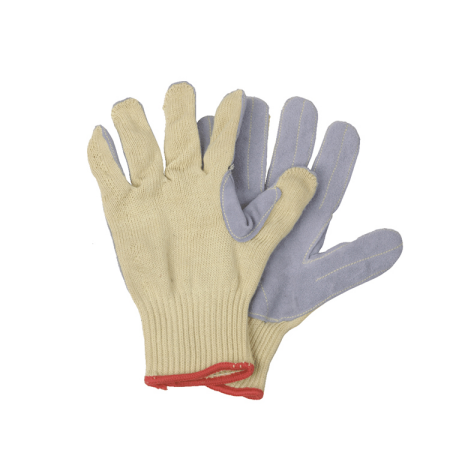
- Reinforced seams can help prevent heat from penetrating through stitching.

- Select welding gloves with longer cuffs for extra protection to the forearms. Welding gloves with length including cuff up to 35cm and 40cm would be better, while 27cm long welding gloves might be not enough but more affordable.
3.2 How to improve dexterity and grip
- Use gloves made from thinner, high-quality leather with greater flexibility.
- Choose gloves with adjustable cuffs that provide a snug fit without being too tight, allowing for better movement of the wrist.

- Choose gloves with strategically placed reinforcements on the palms and fingers, which can maintain strength without sacrificing flexibility.
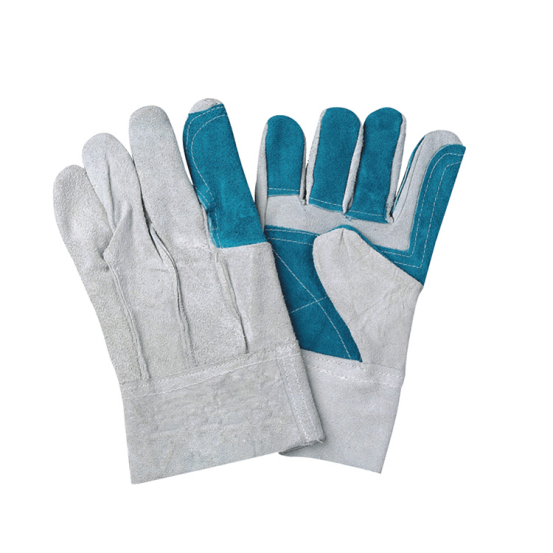
- Consider gloves with ventilation holes or lighter materials (like cotton) in non-critical areas to enhance breathability and comfort.
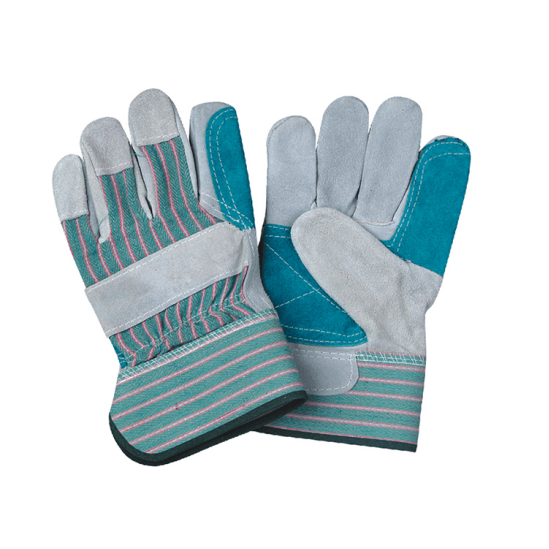
4. How to Care for Leather Welding Gloves
1) After use, gently shake out any debris. Use a soft brush or cloth to remove dirt. Or Clean the exterior with a damp cloth. Avoid soaking the gloves in water.
2) If the gloves get wet, allow them to air dry at room temperature. Direct heat sources can dry out and crack the leather.
3) Avoid exposing the leather welding gloves to oils, solvents, or harsh chemicals that can degrade the leather.
5. Conclusion
Be clear about the types of welding gloves. Based on your budget and working requirements, choose the right quality leather welding gloves. For more information on cow split leather welding gloves, email us to talk further. Contact us through the link below: Be clear about the types of welding gloves. Based on your budget and working requirements, choose the right quality leather welding gloves. For more information on cow split leather welding gloves, email us to talk further. Contact us



